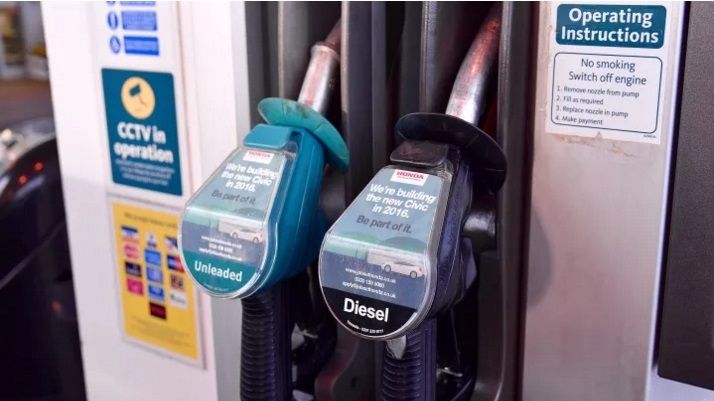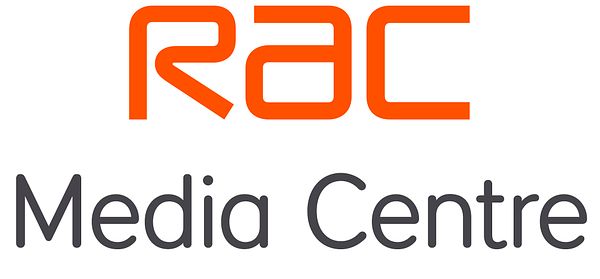
Press release -
Petrol and diesel most expensive for three years as prices go up by 2p a litre in November
Petrol and diesel rose by more than 2p a litre in November taking the average price of both fuels to their most expensive for three years, new RAC Fuel Watch data shows.
A litre of unleaded went up from 118.43p to 120.78p (2.35p) and diesel from 120.96p to 123.18p (2.22p) as a result of oil spending the whole month above the $60 a barrel mark.
The cost of filling a 55-litre family car with petrol is now £66.43 – £3.55 more than in July when unleaded was at its cheapest point of 2017 at 114.33p. A tank of diesel now costs £67.75 – £1.22 more than October and £4.50 more than July when diesel was its 2017 low point of 115.02p. Compared to February 2016, however, when both fuels were an average of 102p a litre a petrol fill-up is £10 more expensive and the diesel equivalent is £11.65 dearer.
The RAC Fuel Watch report for November also shows the price of petrol at the big four supermarkets increased by 2.37p a litre from 114.91p to 117.28p, but diesel rose less than it did across all retailers – 1.72p a litre compared to 2.22p – from 117.78p to 119.50p.
Pump prices have risen as a result of higher wholesale costs brought about by the increased price of oil. They have, however, been kept in check to some extent by the strengthening of the pound, which is important as fuel like oil is traded in dollars. The pound rose 2% from $1.32 at the start of November to $1.35 by the close.
The end of the month also saw the OPEC, the Organization of the Petroleum Exporting Countries, meet in Vienna on 30 November to discuss the level of oil production among its 14 member nations. The organization has been restricting production together with some non-members, most notably Russia, with a view to propping up prices which fell to a low of $26 in January 2016 as part of its over-production strategy. The meeting concluded with the production cut being extended from its scheduled conclusion at the end of March to the close of 2018.
RAC fuel spokesman Simon Williams said: “The market had been expecting OPEC to extend its production cut until the end of next year so after an initial rise in the price of oil during the day of the meeting, things cooled down.
“Even though the oil price is now consistently above $60 a barrel, the increased value of sterling against the dollar is helping to keep fuel prices down at the pumps. This is good news for motorists as it means petrol and diesel prices are unlikely to shoot up, in fact we may even see them come down very slightly in the next week or so.
“The price we will pay for fuel at the pump into 2018 very much hinges on how effective OPEC’s production cut continues to be in reducing the global glut of crude oil. The increased barrel price this is designed to create may also work against the group as it makes fracking for oil in the US more financially viable, which in turn may lead to America increasing its production and filling the gap from the cuts. If this happens it should mean forecourt prices won’t go shooting up.”
Regional fuel price variation
Yorkshire and the Humber endured the largest rise in unleaded pump prices with an average of 2.6p being added to a litre throughout November taking the price from 118.14p to 120.74. Scotland enjoyed the smallest increase – 1.9p a litre compared to the national average unleaded increase of 2.35p a litre, rising from 118.48p to 120.38p. Northern Ireland once again had the cheapest petrol, finishing the month on 119.74p.
Across the UK the price of diesel went up by an average of 2.22p a litre, but in the South West the figure was 2.46p with a litre going up from 121.04p to 123.50p. London and Scotland had the joint lowest increase at 1.91p a litre. The South East continued to have the most expensive diesel with a litre costing 123.77p at the end of November. By way of contrast the average UK diesel price was 123.18p a litre, and the Northern Ireland low price was 121.93p.
Regional average unleaded pump prices
| Unleaded | 01/11/2017 | 30/11/2017 | Change |
| UK average | 118.43 | 120.78 | 2.35 |
| Yorkshire And The Humber | 118.14 | 120.74 | 2.60 |
| North East | 117.85 | 120.43 | 2.58 |
| East | 118.58 | 121.11 | 2.53 |
| East Midlands | 118.36 | 120.80 | 2.44 |
| Wales | 117.79 | 120.23 | 2.44 |
| South East | 118.96 | 121.34 | 2.38 |
| London | 118.57 | 120.93 | 2.36 |
| South West | 118.45 | 120.80 | 2.35 |
| West Midlands | 118.28 | 120.54 | 2.26 |
| Northern Ireland | 117.51 | 119.74 | 2.23 |
| North West | 118.43 | 120.60 | 2.17 |
| Scotland | 118.48 | 120.38 | 1.90 |
Regional average diesel pump prices
| Diesel | |||
| UK average | 120.96 | 123.18 | 2.22 |
| South West | 121.04 | 123.50 | 2.46 |
| East | 121.23 | 123.58 | 2.35 |
| Yorkshire And The Humber | 120.58 | 122.89 | 2.31 |
| West Midlands | 120.55 | 122.85 | 2.30 |
| Wales | 120.61 | 122.87 | 2.26 |
| North West | 120.76 | 123.02 | 2.26 |
| East Midlands | 120.95 | 123.19 | 2.24 |
| Northern Ireland | 119.71 | 121.93 | 2.22 |
| South East | 121.55 | 123.77 | 2.22 |
| North East | 120.36 | 122.31 | 1.95 |
| Scotland | 121.38 | 123.29 | 1.91 |
| London | 121.37 | 123.28 | 1.91 |
Topics
Categories
Notes to Editors
* Average fuel prices quoted in theRAC Fuel Watch November report are based on Experian Catalist data from 1 to 30 November 2017. Wholesale prices were analysed over the same period.
About the RAC
First formed in 1897 the RAC has been looking after the needs of its members and championing the interests of motorists for 120 years.
Today it has more than eight million members and is one of the UK’s most progressive motoring organisations, providing services for both private and business motorists. Whether it's roadside assistance, insurance, buying a used car, vehicle inspections and checks, legal services or up-to-the-minute traffic and travel information – the RAC offers a solution for all motoring needs. The RAC is committed to making motoring easier, safer, more affordable and more enjoyable for drivers and road users.
The RAC is the motorist’s champion and campaigns to support the interests of its members and UK motorists at a national level. This includes voicing concerns about the increasing cost of motoring, particularly the price of fuel and the high level of tax levied on it, advancing levels of road safety, and supporting the needs of all drivers, from young to old.
The RAC’s annual Report on Motoring – first published in 1989 – provides a clear insight into the concerns and issues facing today’s motorists.
For the very latest news on UK fuel prices, check RAC Fuel Watch or follow #racfuelwatch on Twitter. RAC Fuel Watch is a comprehensive guide to the latest UK unleaded petrol and diesel prices – both at the wholesale level and at the pump. RAC Fuel Watch analyses how prices changed through the previous month and compares the most recent prices with those from three, six and 12 months before.
Key facts:
- RAC patrols fix four out of five vehicles at the roadside and on average within 30 minutes
- RAC vans carry more than 500 parts and tools to get members’ vehicles going again
- 92% of members would recommend RAC Rescue to their friends and family

